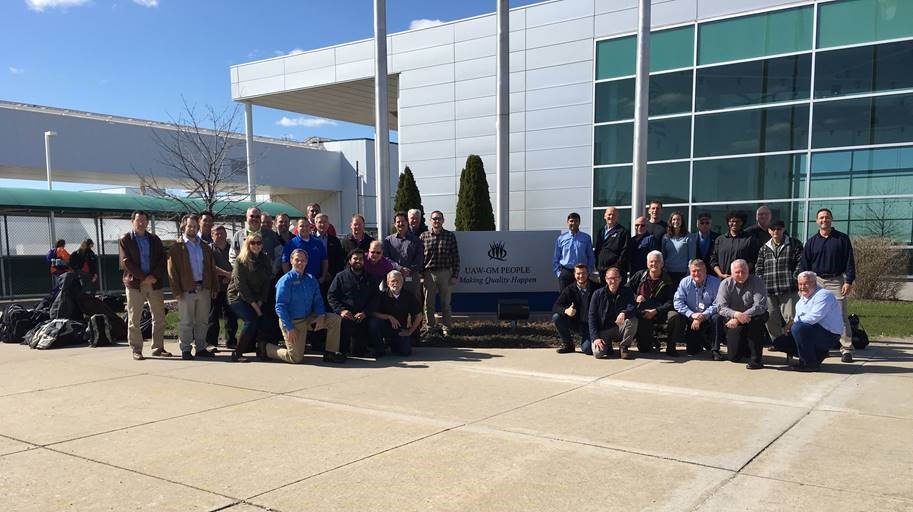The In-Plant Trainings (INPLTs) offered by the U.S. Department of Energy’s Better Plants program are multi-day workshops led by industry experts. INPLTs include both classroom and field-based sessions that train the attendees to identify energy conservation opportunities, quantify savings from those opportunities, and implement projects to realize the energy and cost savings. These training workshops enhance the attendees’ understanding of working principles, knowledge of best practices, and capability of analyzing the energy performance of industrial energy systems. As of September 2022, the Better Plants program has hosted over 140 INPLTs with about 2,400 participants, helping to identify more than $41 million in energy cost savings opportunities.
The Better Plants team piloted a cohort of Virtual In-Plant Trainings (VINPLTs) at the end of 2020 as a means of continuing these interactive training workshops during the pandemic. After piloting two very successful sessions on Industrial Refrigeration and Wastewater Treatment operations, Better Plants and Oak Ridge National Lab decided to offer VINPLTs all year around for 14 energy topics. As of now, more than 1200 people attended these VINPLT session and over $9.2M energy savings opportunities have been identified.
The Better Plants program will deliver a VINPLT on industrial fan (FAN) systems from Aug 30 to Oct 25, 2023. The Fan VINPLT will be performed by industrial experts using online video communication technologies. The Fan VINPLT comprises eight (8) 2.5 -hour online training sessions (2-hours formal training and optional 0.5-hour Q&A) that will be delivered on every Wednesday 10:00 AM – 12:30 PM ET for eight (8) consecutive weeks. Participating in this VINPLT is free and open to all US manufacturers. This VINPLT event is limited to 25 participants from 6–8 companies or facilities.
Participants will be trained on industrial fan system fundamentals and undertaking of a system-specific energy assessment, including hands-on training on the fan system assessment module within the Manufacturing Energy Assessment Software for Utility Reduction (MEASUR) tool. To maximize the benefits from attending VINPLTs, homework assignments will be given to the participants at the end of each session and will be due by the next session. These homework assignments are designed to enhance participants’ understanding of industrial fan systems, as well as to identify and quantify energy savings opportunities. During the last session of the VINPLT, participants are expected to create a summary presentation based on their assessment, present their findings, and share the scrubbed version with DOE.
At the completion of the VINPLT, Professional Development Hours (PDHs) Certificates will be prepared for the attendees on demand basis. Participants are expected to collect measurements/data from their own fan systems, perform an energy assessment, and identify energy efficiency opportunities with the help from the instructors. To collect the assessment data, in some cases, diagnostic equipment will be arranged and shipped to the partners. The Better Plants diagnostic equipment are available on a first come, first serve basis.
Aug 30 to Oct 25, 2023; Every Wednesday 10:00 AM–12:30 PM ET (Except Sep 20; 2-hour formal training + optional 0.5-hour Q&A)
Week 1 – Fundamentals of Industrial Fan Systems and Introduction to MEASUR tool; Aug 30, 2023
- Fundamentals of fan systems
- Non-energy benefits from fan system optimization
- Introduction to MEASUR tool
Week 2 – Fan Types and Fan and System Curves; Sept 6, 2023
- Identify major fan types
- Develop and interpret fan curves
- Develop and interpret system curves
Week 3 – Fan Affinity Laws and Fan System Controls; Sept 13, 2023
- Affinity laws for fan systems
- Fan control strategies
- Optimization of fan systems
Week 4 – Measurements for Fan Systems; Sept 27, 2023
- Develop measurement plan
- Identify measurement planes
- Use MEASUR to analyze sample assessment data
Week 5 – Pressure Considerations, Sizing Ducts and System Pressure Losses, Optimization Techniques; Oct 4, 2023
- Collect system pressure data
- Create fan and system curve
- Use MEASUR to analyze top 3 systems
Week 6 – Psychometrics and Air Density for Fan Systems and System Effects; Oct 11, 2023
- Use MEASUR to estimate air density
- Calculate savings and estimate costs for top projects
Week 7 – Fan System Optimization Strategies, Fan System Evaluation with MEASUR; Oct 18, 2023
- Identify energy savings opportunities
- Use MEASUR to analyze a sample or actual traverse data, refine savings & cost estimate for top projects
Week 8 – Industrial Fan System VINPLT Wrap-up Presentations; Oct 25, 2023
- Review major take-away points
- Class presentation
 Ron Wroblewsk
Ron Wroblewsk
Ron Wroblewski, PE, is the President of Productive Energy Solutions, LLC, in Madison, Wisconsin. His consulting and training business helps industrial plants and commercial facilities increase productivity and profitability by making more effective use of their fan, pump, and blower systems.
Ron has over thirty-eight years of experience designing, analyzing, specifying, and optimizing industrial and commercial fan, pump, blower, and HVAC systems. One of his specialties is in-situ measurement of fan system performance.
A highly rated professional trainer, Ron is senior industrial fan systems optimization trainer for the US DOE and the United Nations Industrial Development Organization (UNIDO) and he develops and conducts courses for the Air Movement and Control Association International (AMCA International). As part of his work for the DOE, UNIDO, and AMCA, Ron has designed and presented seminars on a national and international basis, including: Using the Fan Energy Index; Applying VFDs in Fan and Pump Systems; Optimizing Fan, Pump and Blower Systems; Fan Systems Optimization Expert level training; and Motor Systems Management
Ron is a licensed Professional Engineer in Wisconsin. He is a member of the American Society of Heating, Refrigeration and Air Conditioning Engineers (ASHRAE), the American Society of Mechanical Engineers (ASME), and the International society of Electrical and Electronics Engineers (IEEE). He earned his B.S.M.E. at the University of Illinois at Urbana-Champaign and his M.S. in Mechanical Engineering at the University of New Mexico.



